The Bravia CX523 is the successor to 2010’s EX403 series from Sony. As indicated by the model number, the CCFL version of the company’s Internet TV lineup has been downgraded from EX range of Sony TVs… this is an entry-level LCD TV targeted at casual users.
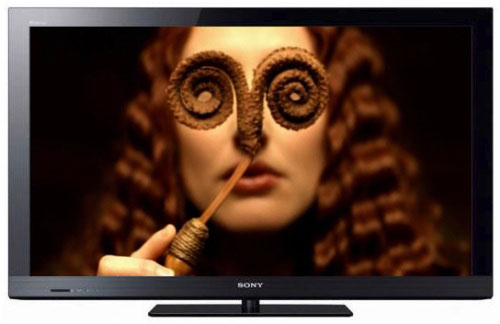
Due to the economic turmoil and ongoing losses within the TV division, the Japanese corporation was forced to sell its manufacturing plants in Mexico and Slovakia to Foxconn. Since our Sony KDL32CX523 review unit was made in Slovakia, it is reasonable to assume that the HDTV is manufactured by Foxconn. However, it is worth stating that Foxconn’s quality control is on par if not superior to some other well-known manufacturers. After all, the Apple iPhone and the Sony Playstation 3 (PS3) are both manufactured by Foxconn based on the designs provided by their clients. Upon close inspection of the 32CX523, we found Rubycon capacitors embedded on the Power board, which indicates that Sony is still in charge of quality control of their TVs.
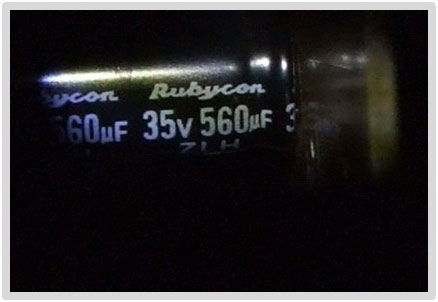
Note: The specific unit we tested was the Sony KDL32CX523BU, denoting the 3-pin-plug British/ United Kingdom version. The same LCD television may be sold by high street retailers such as Comet, Currys and John Lewis, as well as online etailers including Amazon and Dixons as the Sony KDL-32CX523, KDL32CX523B or KDL32CX523BU. While we did not review the 40-inch Sony KDL40CX523/ KDL40CX523BU, there shouldn’t be any drastic difference in picture performance given similar specifications bar screen size.
Sony has noticeably skimped on the quality of the materials and the aesthetics on the Sony KDL-32CX523, and the end result is quite obvious. The bottom strip is composed of plastic designed to emulate brushed metal. The plastic casing seems somewhat fragile, and the unit is very light for its size. Without the silver Sony logo at the front, this Bravia LCD television can easily be mistaken for a £200 supermarket brand.
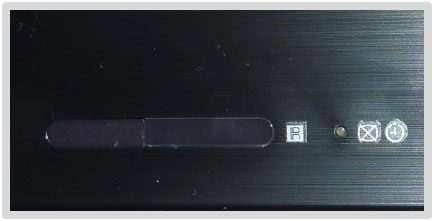
On a positive note, assembly of the table-top stand was straightforward and very simple. It is one of the best methods I’ve seen thus far, and they have used heavy metal to anchor the panel and prevent it from being knocked over.
The location of the AV inputs and the build quality are in keeping with today’s standards. The PSU is located on the right, and the connection ports are located on the left. It is also worth noting that the power cord is attached to the TV, which could pose a problem to some users.
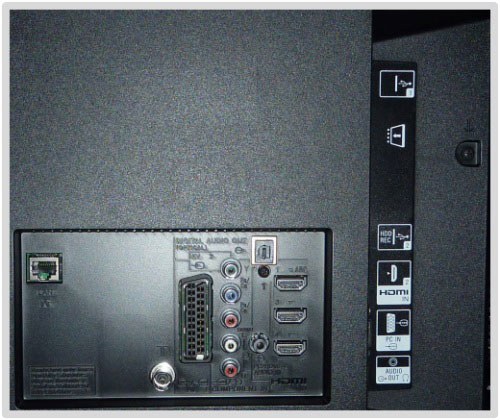
The KDL32CX523 does not feature Sony’s iconic XMB navigation. Instead, it features bottom-up GUI especially designed to enhance the internet features. The new GUI is filled with both basic and advanced options, but certain options are placed within the Home Menu, which may confuse users. For an example, [Scene Select] – which should belong in the [Picture Settings] submenu – is located under [System Settings]. That said, more experienced users probably won’t be affected by this.
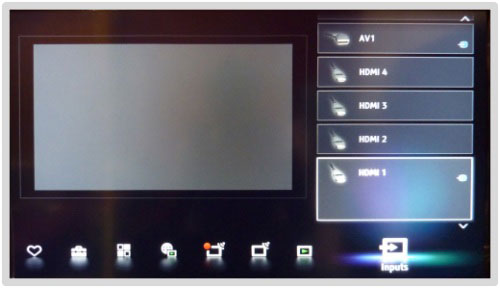
The GUI also supports independent source and resolution customisation, allowing users to adjust the picture according to the source and resolution. The [Picture], [Sound], [Aspect Ratio], [PIP], [Presence Sensor], [Scene Select], [Timer] and [Speaker Output] submenus can be accessed via the [Options] button on the remote control. However, one of the key features on the Sony CX523 – the white balance controls – is sadly broken: increasing the RGB Bias resulted in a tinted image. Hopefully this can be addressed via a firmware update, so let’s keep our eyes peeled.
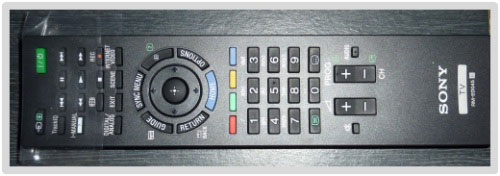
Sony’s cost-cutting measures were not limited to the chassis. The plastic enclosure of the remote feels hollow, and appears visually cheap compared to previous offerings from Sony. Thankfully it is responsive, and ergonomics are well within standards.
Greyscale and Gamma accuracy are vital for portraying any given image accurately, therefore the display must be calibrated to a set of standards used by the industry. In the case of HDTV, the set standard for colour space is Rec. 709 which is similar to sRGB, and both standards share identical white point D65 (we chose a gamma value of 2.2).
Greyscale calibration ensures all greys between black and white are free from colour dominance, which is achieved by assigning the RGB values to 6500K Correlated Colour Temperature (CCT). Regrettably, it is not possible for a consumer-grade display to yield 100% accuracy, so the goal is to maintain errors within acceptable levels as indicated by Delta E (dE) values.
Unfortunately we were unable to obtain flat 6500K CCT on the Sony Bravia KDL32CX523, but thankfully it wasn’t too far off. Surprisingly the gamma remained stable across the range. It is worth noting that the picture quality was decent after basic calibration, which makes the CX523 ideal for casual users who do not wish to spend hours calibrating the LCD TV. The results below were obtained by placing the colorimeter at the centre of the screen to minimise measurement errors.
![CCT in [Custom] mode](https://www.hdtvtest.co.uk/news/wp-content/uploads/2018/04/hdtv_Sony-KDL32CX523_post-cct.jpg) |
| CCT in General [Custom] mode with [Colour Temperature] “Warm 2” |
![RGB Tracking in [Custom] mode](https://www.hdtvtest.co.uk/news/wp-content/uploads/2018/04/hdtv_Sony-KDL32CX523_post-rgb.jpg) |
| RGB tracking and dEs in General [Custom] mode |
![Gamma curve in [Game] mode](https://www.hdtvtest.co.uk/news/wp-content/uploads/2018/04/hdtv_Sony-KDL32CX523_post-gamma.jpg) | |
| Gamma curve in [Custom] mode | Corresponding gamma tracking |
![CIE chart in [Custom] mode](https://www.hdtvtest.co.uk/news/wp-content/uploads/2018/04/hdtv_Sony-KDL32CX523_post-cie.jpg) |
| CIE chart with reference to HD Rec.709 |
![Colour luminance levels in [Custom] mode](https://www.hdtvtest.co.uk/news/wp-content/uploads/2018/04/hdtv_Sony-KDL32CX523_colour-luminance.gif) |
| Colour luminance (coloured bars = targets; black bars = measured values) |
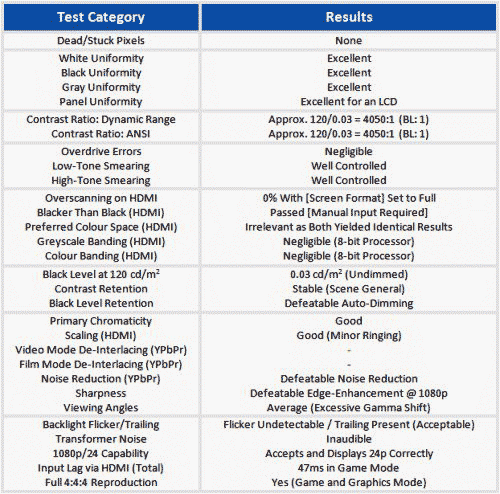

The SPVA LCD panel embedded within the KDL-32CX523 produced excellent overall uniformity, which now seems to be the norm for CCFL-based S-PVA panels. During the pure white test (100IRE), the classic red and green tinting commonly found on LCDs was absent. Backlight bleeding was well-controlled, and the panel uniformity was considerably clean. There were a few visible defects and imperfections across the LCD panel (e.g. transparent vertical bars), which hindered calibration accuracy slightly. However, such errors are common to most consumer-grade LCD televisions, and are extremely difficult to avoid. Of course, screen uniformity may also vary from one sample to another.
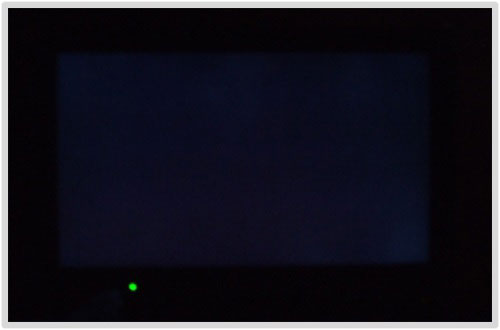
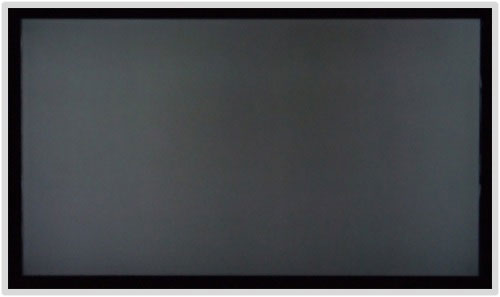
In [General Scene Mode], the Sony CX523 with white level (contrast) set to 100 yielded a dynamic range of 4050:1 and ANSI of around 4050:1, which is very impressive for a 32-inch SPVA-based LCD television, since we’ve only recorded 40″ Samsung LCD TVs with such deep levels of black.
Upon testing via PixPerAn, it was immediately apparent that the motion signature of the SPVA panel found on the KDL32CX523 is quite different to traditional S-PVA panels (such as the LTA400HM02 found on the Toshiba RV753): the response time has been improved without inducing any side effect such as inverse ghosting. Apart from minor black trailing, the motion was predominantly clean, so much so that we initially did not believe the panel to be SPVA.
![]()
Motion blur inherent to LCDs is widely regarded as a negative attribute. In truth, the detrimental effect is mostly limited to High-Motion Contents (48, 50 and 60i/p) as it obscures fine details during motion. Low-Motion contents (24, 25 and 30p) however benefit from the inherent blur as it helps to reduce frame-judder caused by prolonged latency between individual frames, thus creating the illusion of continuous free-flowing motion which appears easier on the eye. Some refer to it as soft motion as opposed to hard motion where continuous images appear as series of stills due to the lack of blur. A standard 60Hz LCD is more than sufficient for contents based on low motion (including the majority of PS3 and Xbox 360 titles). However, fans of fast-paced contents and 60p games should avoid LCD and invest in a plasma TV instead.
Overscan: The aspect ratio can be configured via [Screen Format] through the on-screen menu or the remote control.
Blacker-than-Black (HDMI): The Sony 32CX523 accepts both 0-255 and 16-235 formats via HDMI (RGB), but it needs to be manually defined, as [Auto] will not detect varying black in RGB Colorspace.
Viewing Angle: The viewing angle of the KDL32CX523’s LCD panel is typical of SPVA, which is rather average and suffers from excessive gamma shift. On bright contents, visible off-angle gamma shifts and desaturated colours can vary from tolerable to intolerable levels, but it largely depends on the viewing distance. On darker contents, off-angle gamma shifts exaggerate noise and dithering artefacts caused by heavy compression, which can pose a problem if the owner’s friends are highly discerning in regards to image quality. Thankfully, viewing the unit dead-on from the recommended distance of 1.6 meters does resolve the issue. If one requires a flat-screen television with wider viewing angles, it is best to opt for an IPS LCD.
Sharpness: The CX523 fully supports 1:1 pixel mapping. However, the default 50 visibly blurs the image to an extent, so it is better to increase the sharpness to 60. In addition, edge enhancement cannot be disabled on sources other than 1080i/p.
To evaluate the image quality rendered by the Bravia KDL-32CX523, a small number of carefully chosen images were used to detect visible artefacts/errors. Aeon was used to detect errors in skin tone, luminance and depth; whereas Acela Express was used to detect greyscale and gamma errors in addition to black crush.

As with most HDTVs, the picture out of the box was bright, heavily saturated and aggressively sharpened, as all the bells and whistles were enabled by default. After carrying out basic calibration under [General Scene Mode], the KDL32CX523 yielded excellent results. The mass shades of warm colours that envelop Charlize Theron’s face, neck and chest were clearly visible, close enough to a calibrated display (even though the default WARM 2 was slightly shifted towards blue, which can only be rectified via colorimeter or with a trained eye).

As expected, the post-calibration picture performance of the CX523 was excellent and comparable to a calibrated Dell 2209WA. There was no evidence of any serious black crush, tinting, nor any form of gamma error.
Both high-definition and standard def content were beautifully rendered on the Sony KDL32CX523 over HDMI. I failed to spot any form of error that would normally destroy or severely impact the image quality, which remained faithful to the source. Colour luminance could have been more linear across the 0-255 range, but it is within tolerance for a budget model. Color shifts remained well under dE 5, which is excellent for an entry-level LCD TV. However, upon close inspection the overall image wasn’t as clean as the Samsung 40C580 or the Dell 2209WA monitor due to the internal processing.
Although both the Samsung C580 and the Sony CX523 utilise an 8-bit processor, I witnessed slightly greater static artefacting on the latter especially on secondary colour ramps. However, it had very little impact on real-world content. Coincidentally, I also saw the same artefact on my another BRAVIA model I own (KDL-26P2530), so it’s possible that the processor in both Sonys belongs to the same OEM family.
Overall, the picture performance is hard to fault, especially considering the price. The majority of users should be pleased with the images delivered out of the box with only minor adjustments needed.
I expected the input lag of the KDL-32CX523 to be similar to the Samsung LE32C530 and the LG 32LD450 LCD TVs, given the low-cost processor and the size of the panel. But unfortunately to my surprise the lag was higher, which renders the CX523 unsuitable for games that require rapid response. It is a shame really, because unlike other SPVA panels, the one on this HDTV does not suffer from the dreaded dragging blacks nor excessive motion blur.
Previous Sony flat-panel Bravias were praised for their acoustic performance, but unfortunately the audio quality of the KDL32CX523 is comparable to cheap PC speakers – I suppose some cost-cutting was applied in the respect too. Those who demand higher fidelity can outsource the sound to a pair of active speakers via the 3.5mm headphone jack.
The Sony KDL32CX523 LCD TV is by no means a performance model, but it could have been, had it featured a better video processor and functioning greyscale controls. Nevertheless, the CX523 still delivers excellent value for money provided you’re not a serious gamer.
